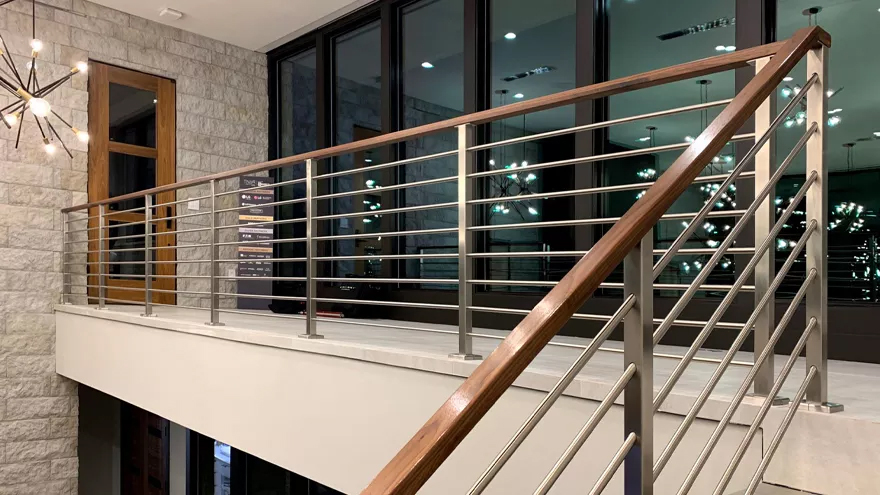
When it comes to custom handrail metal fabrication, selecting the right material for your commercial or residential project is essential. The choice of material impacts your railing system’s durability, maintenance, and overall design. Whether you prefer the classic look of wrought iron, the sleek modern appeal of stainless steel handrails, or the lightweight efficiency of aluminum, each option offers unique benefits.
Steel railings provide strength and durability, while glass railings with metal frames bring a contemporary aesthetic, perfect for modern commercial buildings. Materials like powder-coated steel or wrought iron can add intricate designs with minimal maintenance. If you’re exploring custom railing options for a stair railing or a full railing system, understanding these materials will help you make the best decision. So, let’s start and uncover the best materials for your project!
Advantages Of Wrought Iron For Custom Handrails
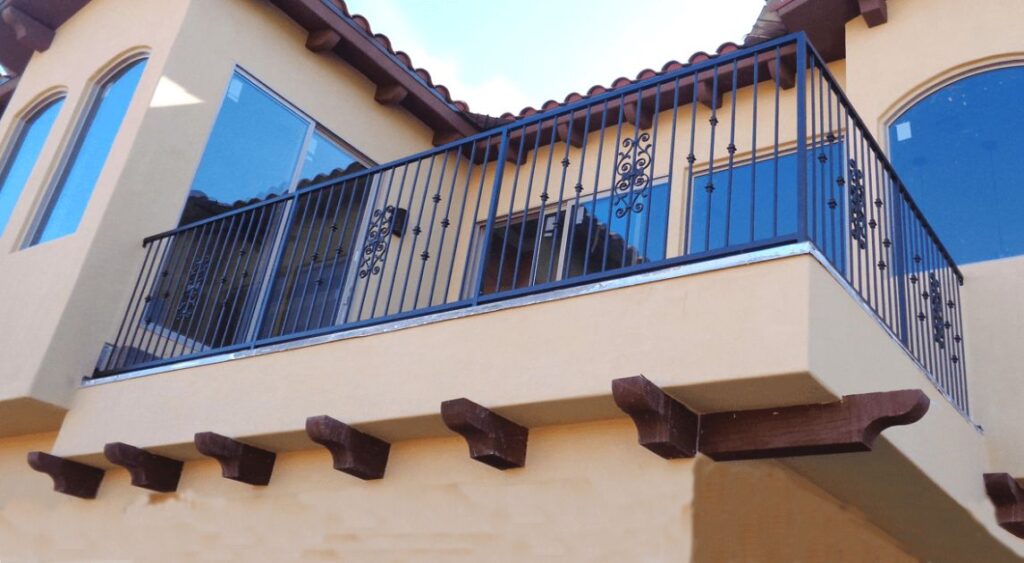
Wrought iron is a timeless material that offers aesthetic and functional benefits for custom handrails. One of its most prominent advantages is its unmatched durability, as wrought iron can withstand significant wear and tear, making it ideal for indoor and outdoor use. Its strength ensures that your handrails will last for decades, even in high-traffic areas.
Additionally, wrought iron’s malleability allows for intricate and decorative designs, enabling homeowners and businesses to add a touch of elegance and uniqueness to their spaces. From clean, minimalist styles to ornate, classical patterns, wrought iron is versatile enough to suit various architectural designs.
The material can also be customized with finishes like powder coatings, which enhance its resistance to rust and corrosion while offering a range of color options to match any space. Lastly, wrought iron is low maintenance, reducing long-term costs while maintaining its visual appeal. These qualities make it an excellent choice for creating custom handrails that are both practical and visually striking.
Strength And Versatility Of Stainless Steel Railings
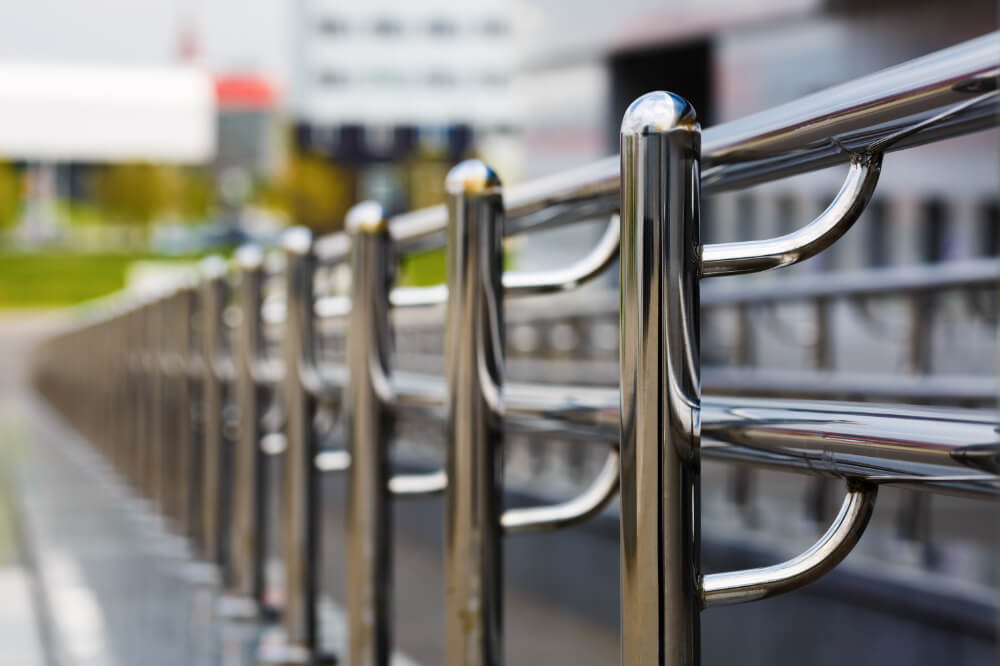
Stainless steel railings are popular for modern handrail systems thanks to their exceptional strength and versatility. Stainless steel is highly durable and capable of withstanding environmental and physical impacts without losing its structural integrity. This makes it a reliable option for railings in high-traffic areas or outdoor settings where exposure to the elements is inevitable.
Furthermore, stainless steel is highly resistant to rust and corrosion, ensuring longevity even in humid or coastal environments. From a design perspective, stainless steel offers a sleek, contemporary appearance that complements numerous architectural styles, from industrial to minimalist. It can be used independently or with other materials like glass or wood to create dynamic railing systems that perfectly align with a project’s aesthetic goals.
Stainless steel also requires minimal maintenance, mainly occasional cleaning, to maintain its polished look, making it a practical and cost-effective choice for residential and commercial applications. Its strength, durability, and visual appeal make it a standout material for custom railing projects.
Lightweight and Budget-Friendly Aluminum Handrails
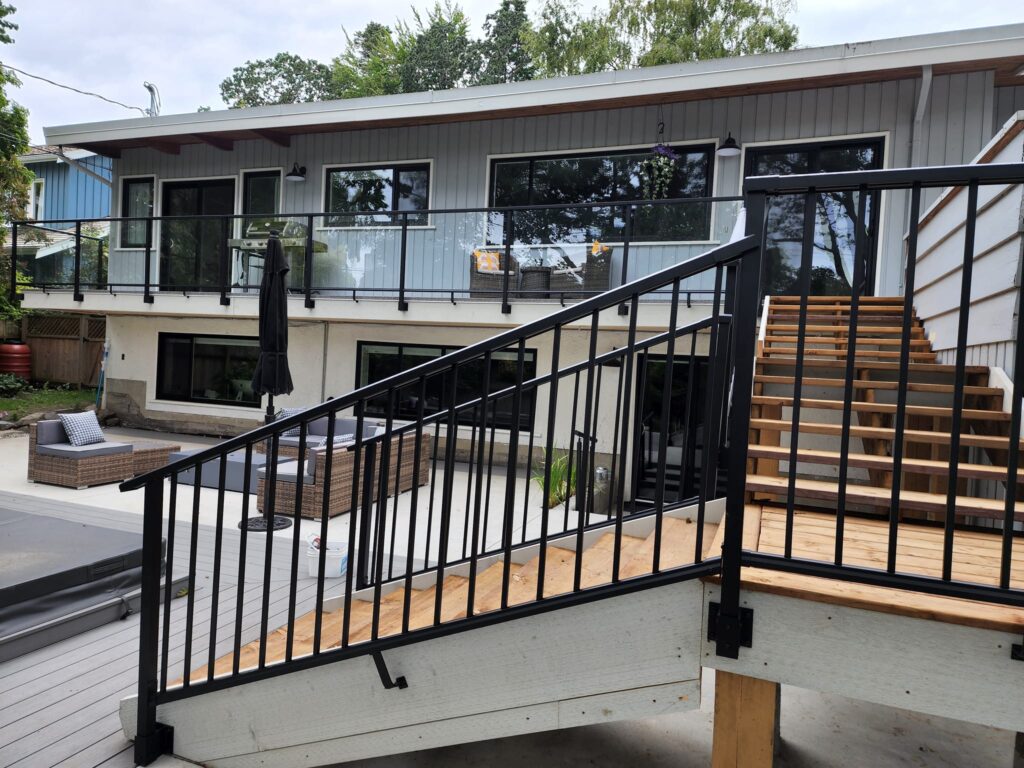
Aluminum handrails are an excellent choice for projects requiring a lightweight, cost-effective solution without sacrificing durability or aesthetic appeal. This highly corrosion-resistant versatile material makes it well-suited for indoor and outdoor installations where environmental exposure is a concern.
Aluminum handrails are easy to customize, allowing for various finishes, including powder coating and anodized options, which enhance their visual appeal while adding an extra layer of protection. Additionally, the lightweight nature of aluminum makes installation quicker and more efficient, reducing labor costs and time. For those working with a limited budget, aluminum remains an affordable option that meets safety and structural requirements.
Its sustainability is another key advantage, as aluminum is recyclable, which makes it an environmentally friendly choice for conscientious builders. Whether used in residential staircases, commercial buildings, or outdoor decks, aluminum offers a balance of functionality and style that suits a broad spectrum of design needs.
The Modern Appeal of Glass and Metal Frames
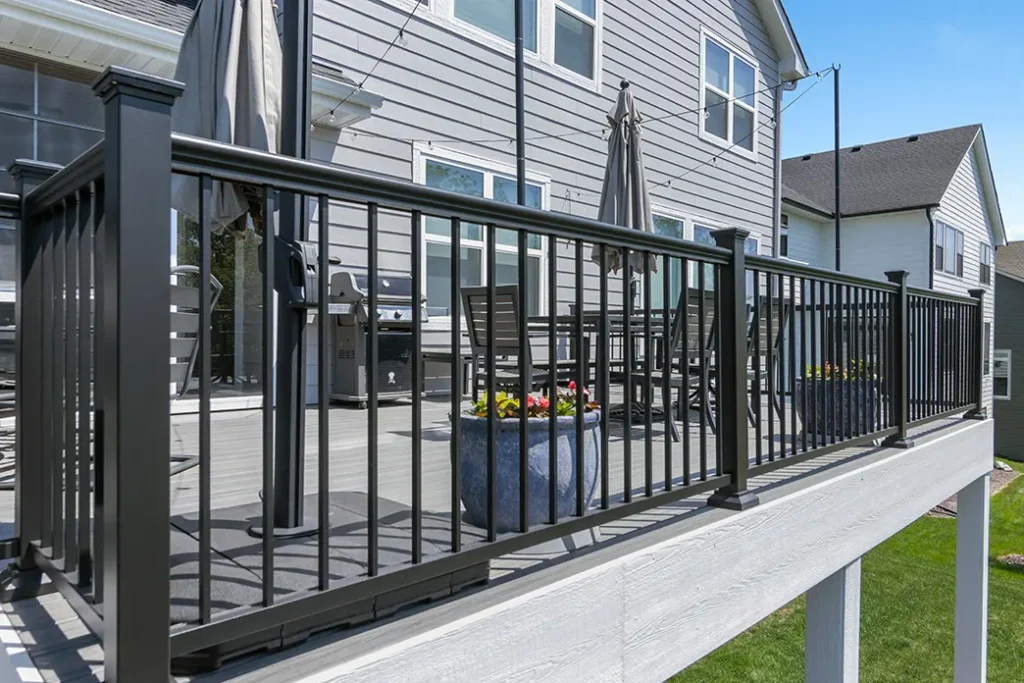
Thanks to their sleek, contemporary aesthetic, glass and metal frames have become increasingly popular in modern railing systems. This combination brings a sophisticated edge to interior and exterior spaces, blending functionality with design effortlessly. Tempered glass panels enhance the safety of these custom metal railings while providing an unobstructed view, making them ideal for applications like balconies, terraces, or stairways that emphasize openness and light.
Pairing glass with metal frames, usually stainless steel or aluminum, creates a dynamic contrast between the glass’s transparency and the metal’s sturdiness, striking a perfect balance between elegance and durability. Additionally, the minimalist nature of glass and metal designs aligns seamlessly with modern architectural trends, which often favor clean lines and simple forms.
These frames are also incredibly low-maintenance; glass panels only require occasional cleaning and metal components are built to withstand wear and tear. Combining these materials results in a timeless solution that enhances visual appeal while meeting safety and practicality standards.
Durability and Style with Powder-Coated Steel Options
Powder-coated steel handrails combine exceptional durability with sleek, modern aesthetics, making them a top choice for various architectural applications. The powder-coating process involves applying a dry powder to the steel surface, which is then cured under heat to create a hard and resilient finish. This coating acts as a protective barrier, safeguarding the material from corrosion, scratches, and fading caused by weather exposure or daily use.
Beyond functionality, powder-coated steel offers incredible versatility in design, as it comes in a wide range of colors and finishes, from matte black to glossy white or even textured effects. These options allow seamless integration of the handrails into any architectural theme, blending form and function effortlessly.
The robustness of powder-coated steel ensures it can withstand heavy use in residential, commercial, or outdoor settings without compromising on aesthetics over time. Whether installed in high-traffic areas or exposed to harsh climates, powder-coated steel offers a cost-effective solution that guarantees long-lasting performance and style for years.
Maintenance Tips for Long-Lasting Handrail Materials
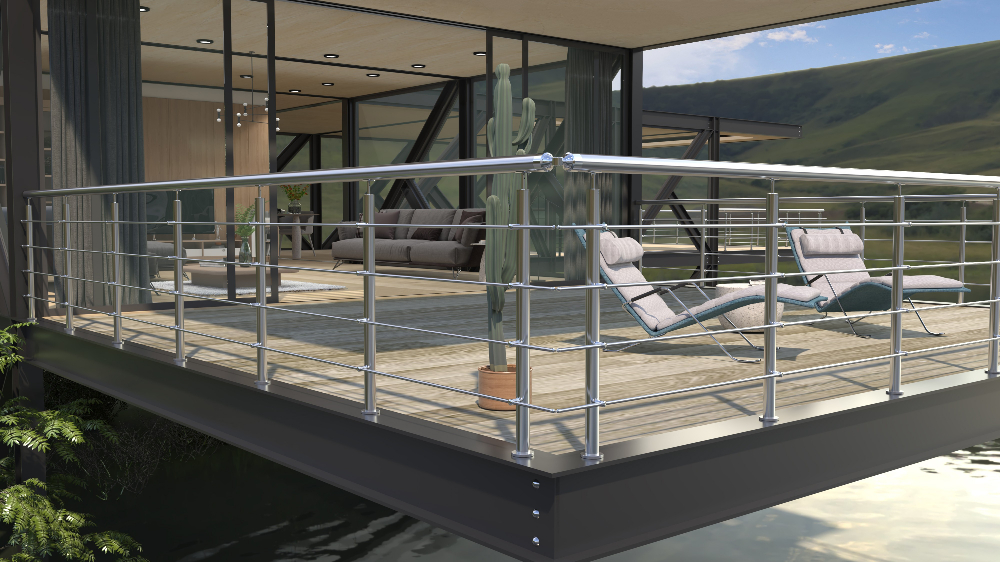
Proper maintenance can significantly extend the lifespan of handrail materials, ensuring they remain safe and visually appealing. For glass and metal combinations, regularly clean the glass panels with a non-abrasive cleaner and a microfiber cloth to remove dust, fingerprints, and grime without scratching the surface.
Metal components, such as stainless steel or aluminum frames, can be wiped down with a damp cloth and a mild detergent to keep their surface bright and residue-free. For powder-coated steel handrails, always inspect the coating for chips or scratches; addressing any damage promptly with touch-up paint can prevent rusting or further wear.
Additionally, avoid using harsh chemicals or abrasive tools, as these can compromise the finish of the materials. Routinely check for loose screws or fittings, tightening them as needed to maintain structural integrity and safety. Finally, consider applying a protective wax or sealant on metal surfaces once or twice a year to enhance their resistance to elements like moisture and UV exposure.
Comparing Aesthetics for Residential vs. Commercial Railings
The aesthetics of railings serve different purposes in residential and commercial spaces due to varied functional and stylistic needs. Residential railings often focus on blending seamlessly with the home’s design, providing an opportunity to complement architecture, décor, and personal taste. Homeowners may opt for intricate patterns, warm wood finishes, or sleek modern metals to match the overall style of their interiors or exteriors.
On the other hand, commercial railings prioritize durability, practicality, and safety while maintaining a professional appearance. Many commercial spaces use minimalist designs with simple lines and neutral colors, such as stainless steel or powder-coated metals, ensuring long-lasting appeal and ease of maintenance.
Whether residential or commercial projects, the choice of railing aesthetics must address the environment’s purpose and style, promoting visual harmony and functionality. The contrasting priorities between the two sectors highlight railings’ crucial role in merging form with purpose.
Custom Designs to Enhance Stair Railing Systems
Custom designs open opportunities to transform stair railing systems into striking architectural features. Incorporating unique details, such as decorative balusters, laser-cut panels, or sculptural elements, can elevate a staircase from merely functional to a dramatic focal point within the space.
Materials like wrought iron, glass, or mixed mediums allow for further personalization, catering to contemporary and traditional aesthetics. Using custom finishes, such as matte or polished textures, also helps create a cohesive look that mirrors the surrounding décor. Custom stair railing designs for residences can reflect the homeowner’s personality, accentuating charm and character.
Businesses and public buildings, on the other hand, can benefit from custom designs by incorporating logos, motifs, or patterns that reinforce branding and identity. Additionally, innovative lighting installations along railings can transform their appearance, adding safety and ambiance.
FAQs
What materials are best for custom stair railings?
The choice of material depends on the overall aesthetic goals and budget. Popular options include wrought iron for a timeless elegance, glass for a sleek modern touch, and wood for a traditional or rustic feel. Mixed materials can create unique designs, combining the best of both worlds. Always consider durability and maintenance needs when selecting materials.
How do I choose a design that matches my space?
Start by analyzing your interior style, whether contemporary, industrial, or classic. Look for inspiration in existing decor and architectural elements, and consider themes that fit cohesively with your space. Custom railing designers can provide tailored recommendations based on your preferences. Ensure the design also balances safety and functionality effectively.
Are custom stair railings expensive?
Costs for custom railings vary depending on materials, complexity, size, and additional features like lighting. While custom options may be pricier than off-the-shelf solutions, they add significant value to your space aesthetically and functionally. Investing in high-quality craftsmanship reduces long-term costs associated with repairs or replacements.
Can custom stair railings be used in outdoor settings?
Custom railings can be designed for outdoor spaces like porches, decks, or terraces. Materials like stainless steel, aluminum, or treated wood are commonly used for durability against weather elements. Proper coatings and finishes, like powder coating or weatherproof treatments, ensure longevity and resistance to corrosion or decay.
Conclusion
I hope this guide has provided valuable insights into the world of custom stair railings and their many benefits. Whether enhancing safety, elevating your home’s aesthetic appeal, or adding value to your property, metal railings offer a versatile solution tailored to your unique needs. With the ability to choose from various materials, designs, and finishes, you can create a feature that perfectly complements your space. While custom options may require a higher initial investment, their superior craftsmanship and durability ensure they stand the test of time. Consult with experienced professionals to achieve the ideal balance of style and functionality. Investing in custom stair railings is not just a design choice. It’s a statement of quality and individuality for your space.
